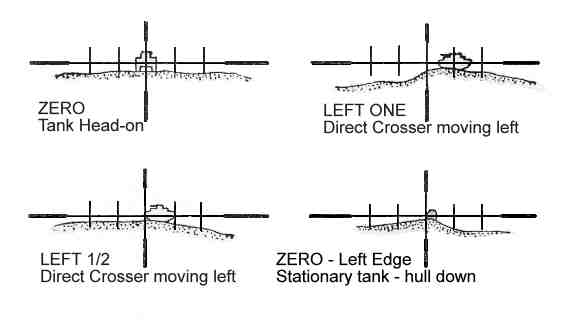-
Posts
720 -
Joined
-
Last visited
Content Type
Profiles
Forums
Gallery
Blogs
Events
Articles
Store
Downloads
Posts posted by Bazz
-
-
Hello Jez and welcome to the very odd site.
-
Hello and welcome.
-
Hello james, and welcome
-
Got The Cenotaph service on the telly at the moment.
-
Very intersting reading and pictures, nice to hear about tankcrewman who did it for real as i only ever did it in peacetime.
-
Thank you all, I had a brilliant birthday.
Bazz
-
Out at my local Club with family and friends parade t 20.30. Meal then lots of drinks
-
I used to wear my black one piece motercycle oversuit over my uniform when commanding my Ferret, due to the vast amount of parcipitation in the Emerald Isle.
-
If it was issued to The Sherwood Rangers Yeomanry, they were B Squadron Queens Own Yeomanry when I served with D Sqn.
-
found whilst browsing, can remember this on Ferret and CVR CES.
-
if I remember correctly, it was a slight argument with a tree.
-
-
Would love to go, but I'm at Westdown Camp on Annual Camp.
-
Alien, I assumed the same re tac/call signs.
-
When I Was the Sqn Ldrs L/R driver in the 80's/90's I had the veh callsign painted on the doors using a stencil, ISTR that all the B vehs had them done the same. We also had the callsign painted onto the convoy light plate.
-
Hello Mark and welcome, hope you have lots of fun with your Fox, I kept breaking mine( lucky it was issued)
-
Hello Peter and welcome, nice to have you aboard.
-
I personnally would have no problem with a suscription.
-
I'm watching, thank you very much for the links.
-
Yep, a T62 I would say.
-
Alien, didn't we follow RTR Regt on the arms plot.
-
A couple of questions from the ignorant, how do you know that this is a Vickers MG bunker? are they built to a certain design?
-
found on another site re-laying of the 17 pounder using the a/t sight
Until the beginning of 1942 British anti-tank gunnery used a 'false range', they aimed low and added a few hundred yards depending on the actual range. From the beginning of 1942 they adopted zeroing of anti-tank guns, usually using a tank sized target at 500 yard with the aim point being centre of mass. This meant the actual range could be set on the range drum, part of the drill for coming into action was to prepare a range card for recognisable objects in the zone of fire. They also issued simple tables for lead depending on range and speed and whether the target was a 'direct crosser' (45 - 90 degree approach angle) or 'diagonal crosser' (15 - 45 degrees). This was related the lead graticules ('lead units') in the anti-tank telescopes. Of course the time of flight of the shot from high velocity anti-tank guns at normal battle ranges was under 1 second, and a tank moving at about 15 mph covered about 7 yards in this time. A 'direct crosser' at 15 mph required a lead of 1 and a 'diagonal crosser' a half, the smallest lead order was a quarter.
Figure 2 - Anti-tank Sight Aiming - Graticule Method
The angles subtended by the graticules both vertically and horizontally were all part of the layer's knowledge

In early 1943 'central laying' was approved as an alternative to graticule laying. This meant that the layer set the lead on the lead drum and aligned his centre graticules with the target. In either case the layer tracked slightly ahead of any crossing target and then let the target move onto his graticule aimpoint when the gun was loaded and he as ready to fire.
Anti-tank engagements were conducted by the No 1 giving initial orders to identify the target relative to the centre of arc, describing it, ordering the range and lead, and ordering fire. He then ordered corrections using 'Add' or 'Drop' for range (these were cumulative) and a new lead (not cumulative). These corrections were judged by observing the tracer to see where the shot went relative to its target. By 1943 ranges and corrections were always ordered to the nearest 200 yards unless the target was hull down in which case 100 yards was used.
The following table, based on firing table probable errors, shows the inherent direct fire accuracy of anti-tank guns when their MPI was on the target centre (ie no human errors). In operations worn guns and other mis-alignments could reduce the chance by up to half at shorter ranges and to a quarter at longer ranges. In the first years of the war training material was issued detailing the most vulnerable areas of enemy tanks. This may have had some use for very short range engagements with infantry anti-tank weapons. It was unrealistic at longer ranges and the 1942 doctrine of 'centre of mass' ended it as far as anti-tank artillery was concerned. Trials also established that a 2 or 6-pdr at the end of its barrel wear life would hit only 18 inches low at 1000 yards.
-







Gotta introduce myself to a Forum? /:|
in Introductions & Welcomes
Posted
Hello Luke and welcome, I'm a tank fan myself, don't own one but served on many AFVs for 25 years.